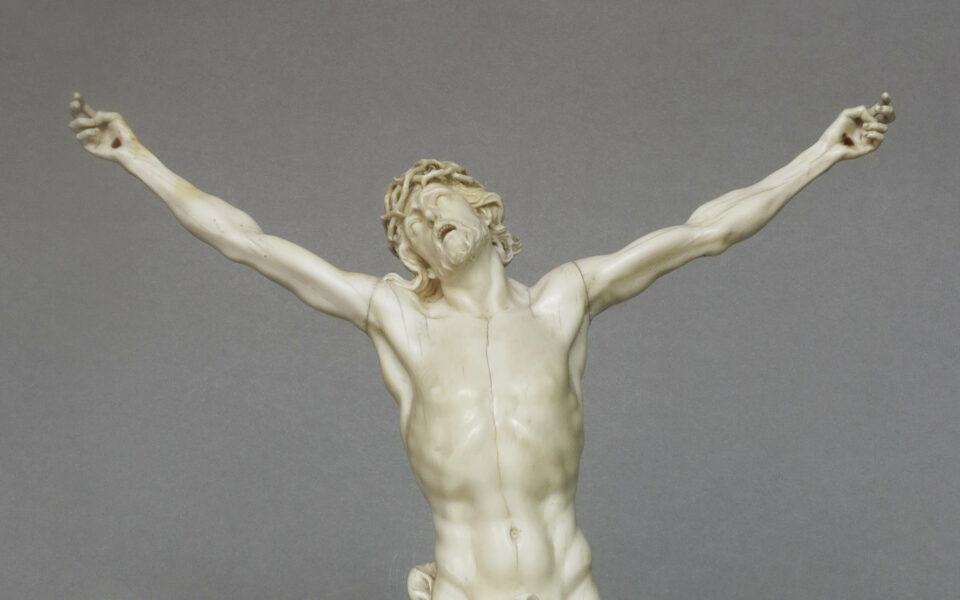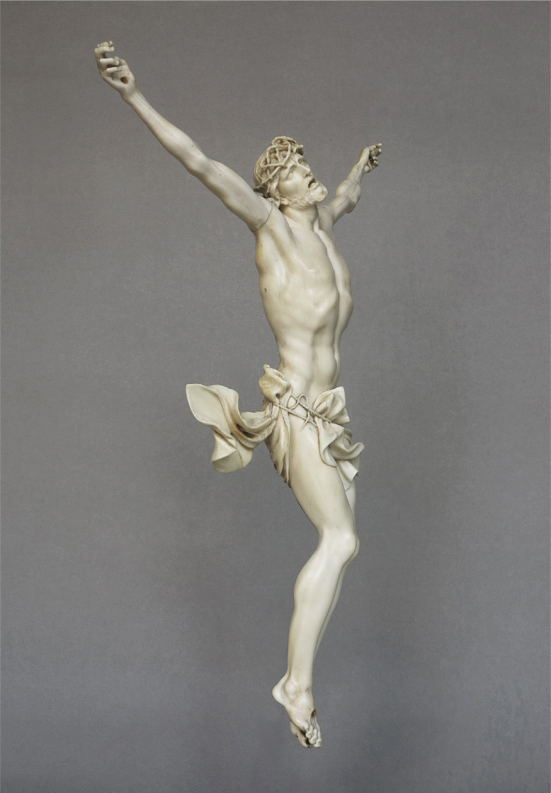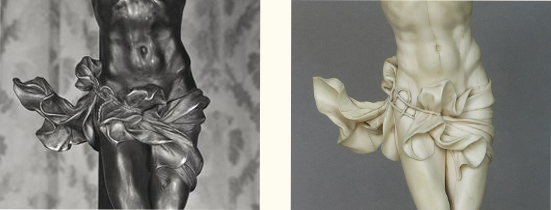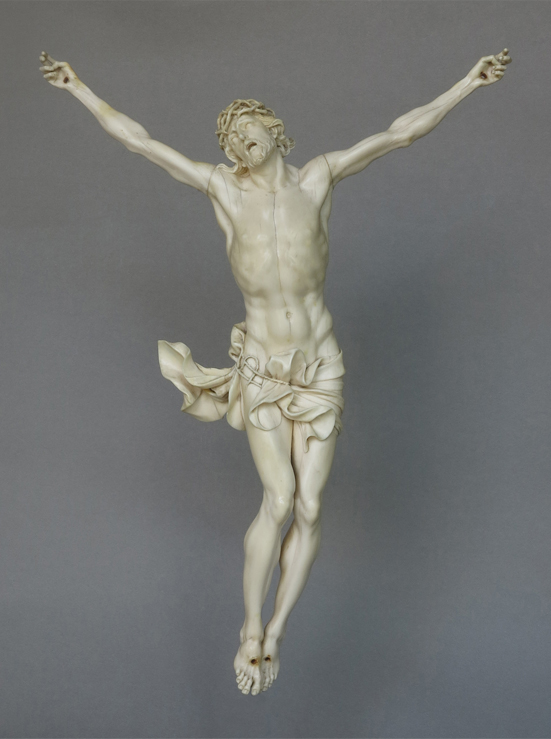
An Intense Ivory Christ
This exquisite sculpture is a vivid baroque interpretation of the Christus triumphans: still alive, with open eyes and raised head, recommending his spirit to God the Father.
The refined ivory artifact offers the viewer remarkable anatomy and quality, both on the front and on the back. As usual, the arms are carved separately and then joined at shoulder height.
The image of the living Christ and the presence of four nails fastening the body to the cross recall a precise iconography, retrieved from early medieval models. This precious sculpture witnesses the European fortune of this representation during the Baroque period, partially anticipated by Michelangelo in his famous drawing for Vittoria Colonna (1545, London, British Museum).
In fact, by capturing the most significant and dramatic moment of the story, this representation perfectly meets the intense religious sentiment typical of the 17th century.

In the present Christ, the physiognomy, the posture, the end of the loincloth raised by the wind, the rope stretched against the right thigh and the use of two separate nails in the feet, derive from an invention by Alessandro Algardi (Bologna 1598-Rome 1654), the great sculptor active in Rome in the first half of the 17th century.
The comparison with his bronze Crucifix in Palazzo Pallavicini Rospigliosi, clarifies the direct derivation from the most popular model of the Baroque era, which is also known in an ivory version now in the National Museum of Mileto.

Around 1647 Algardi made a silver Crucifix for Pope Innocent X, about 60 cm high. That first and very important model, now lost, was immediately replicated by great artists for some important patrons. For example one can mention two ivory crucifixes kept in Palazzo Pitti: one sculpted by Balthasar Permoser around 1686 for Vittoria della Rovere, and a larger one made in 1670 for Cardinal Flavio Chigi, attributed to Lorenz Rues, inherited by Cosimo III de’ Medici in 1692; between 1723 and 1726, Bernardo Holzmann made a silver Crucifix, designed by Giovan Battista Foggini, that today is in the Museum of the Treasure of San Lorenzo.
The lightness and elegant dynamism of the cloth, which echoes the powerful expression of Christ (an explicit reference to the Laocoonte),, and the refined rendering of certain details, such as the fingers of the hands and of thorns, make this precious crucifix a particularly intense example of Baroque ivory sculpture.

Alessandro Algardi (1598-1654), after a model by
LIVING CHRIST
Ivory
Rome
Second half 17th century
Cm 28 x 6 x 38,5 h
Study by Dr. Charles Avery
© 2013 – 2024 cesatiecesati.com | Please do not reproduce without our expressed written consent
Alessandro Cesati, Via San Giovanni sul Muro, 3 – 20121 Milano – P.IVA: IT06833070151